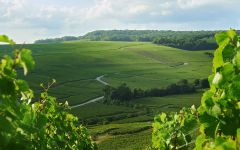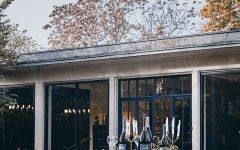Charles Heidsieck Vintage Brut 2000
-
Wine
Spectator -
Wine
Enthusiast -
Wine &
Spirits




Product Details
Your Rating
Somm Note
Winemaker Notes
A deep golden hue with warm highlights of Indian summer, the result of twelve years of aging in thousand year old chalk cellars. An exceptionally delicate, yet long-lasting and present effervescence.
To the Nose
The selection of 58% Pinot Noir complemented with 42% Chardonnay reveals concentrated, dense aromas of humus and ferns of the forest mingled with the floral notes of musk rose. The grands and premiers crus of Pinot Noir emanate the sharp spicy notes of white pepper, licorice, and Espelette peppers.
On the Palate
This triumphant wine, generous, and powerful, is the very expression of the year 2000. Plush with red currants, blackberries and blueberries it carries, it reveals a texture and richness of flavors of candied chestnuts. With an incredibly long finish, the structure offered by the Pinot Noir is nothing less than majestic. The Chardonnay crus contribute a focused complex personality.
Professional Ratings
-
Wine Spectator
A rich note of smoke heralds this toasty version, with truffle and roasted hazelnut aromatics accenting layered flavors of creamed apple, crystallized honey, lemon curd and crème de cassis. Vibrant, with a lovely, lacy texture and racy acidity that persists on the mouthwatering finish. Drink now through 2028. 500 cases imported.
-
Wine Enthusiast
Showing surprising age for such a young vintage, this is a wine that's ready. It is of course, like all Charles Heidsieck Champagnes, beautifully crafted, with its toast and spice element integrated deftly into the crisp fruits. A top quality Champagne, needing food for its full appreciation.
-
Wine & Spirits
A zaftig 2000, this feels voluminous and heady with toasty scents and mature complexity. The golden color and creamy integration of the bubbles suggest enjoying it now, with foie gras.
Other Vintages
2012-
James
Suckling -
Jeb
Dunnuck -
Robert
Parker -
Wine
Spectator
-
James
Suckling
- Decanter
-
Wine
Spectator
-
Wine
Enthusiast -
Robert
Parker -
James
Suckling -
Wine
Spectator -
Wine &
Spirits
-
Wine
Spectator
-
Wine
Spectator









Régis Camus joined Charles Heidsieck in 1994 and has been the head winemaker of the House since 2002. This meticulous and passionate professional likes to keep an eye on everything: the state of the vineyards, the selection of the grapes, their pressing and their vinification, cru by cru, in individual vats. His mission is to perpetuate the Charles Heidsieck style, reflecting the richness of the Champagne region.

Representing the topmost expression of a Champagne house, a vintage Champagne is one made from the produce of a single, superior harvest year. Vintage Champagnes account for a mere 5% of total Champagne production and are produced about three times in a decade. Champagne is typically made as a blend of multiple years in order to preserve the house style; these will have non-vintage, or simply, NV on the label. The term, "vintage," as it applies to all wine, simply means a single harvest year.

Associated with luxury, celebration, and romance, the region, Champagne, is home to the world’s most prized sparkling wine. In order to bear the label, ‘Champagne’, a sparkling wine must originate from this northeastern region of France—called Champagne—and adhere to strict quality standards. Made up of the three towns Reims, Épernay, and Aÿ, it was here that the traditional method of sparkling wine production was both invented and perfected, birthing a winemaking technique as well as a flavor profile that is now emulated worldwide.
Well-drained, limestone and chalky soil defines much of the region, which lend a mineral component to its wines. Champagne’s cold, continental climate promotes ample acidity in its grapes but weather differences from year to year can create significant variation between vintages. While vintage Champagnes are produced in exceptional years, non-vintage cuvées are produced annually from a blend of several years in order to produce Champagnes that maintain a consistent house style.
With nearly negligible exceptions, . These can be blended together or bottled as individual varietal Champagnes, depending on the final style of wine desired. Chardonnay, the only white variety, contributes freshness, elegance, lively acidity and notes of citrus, orchard fruit and white flowers. Pinot Noir and its relative Pinot Meunier, provide the backbone to many blends, adding structure, body and supple red fruit flavors. Wines with a large proportion of Pinot Meunier will be ready to drink earlier, while Pinot Noir contributes to longevity. Whether it is white or rosé, most Champagne is made from a blend of red and white grapes—and uniquely, rosé is often produce by blending together red and white wine. A Champagne made exclusively from Chardonnay will be labeled as ‘blanc de blancs,’ while ones comprised of only red grapes are called ‘blanc de noirs.’
